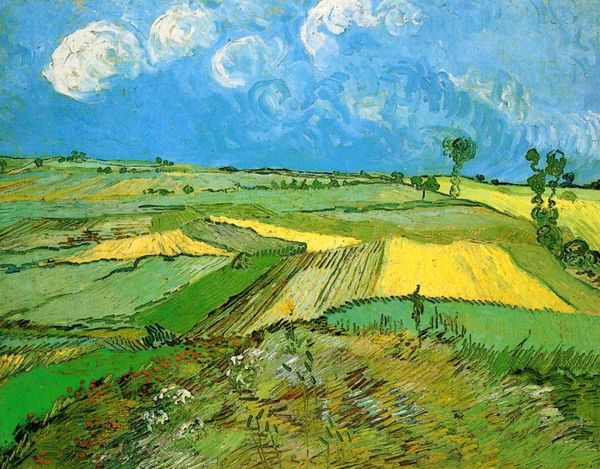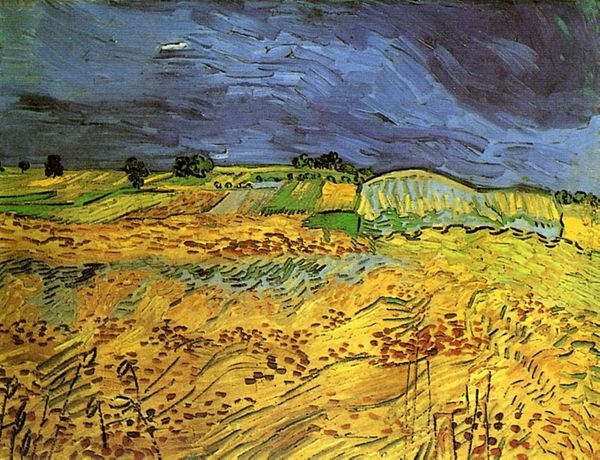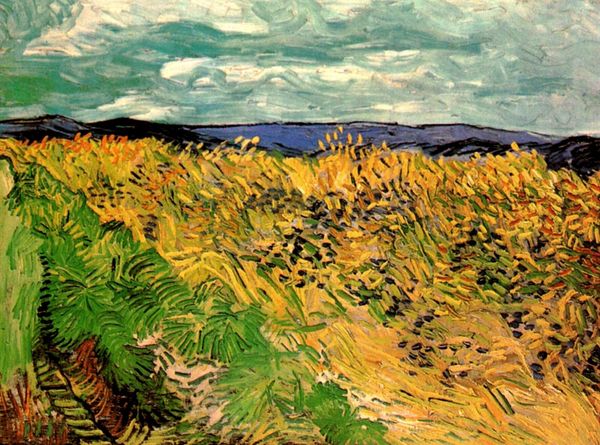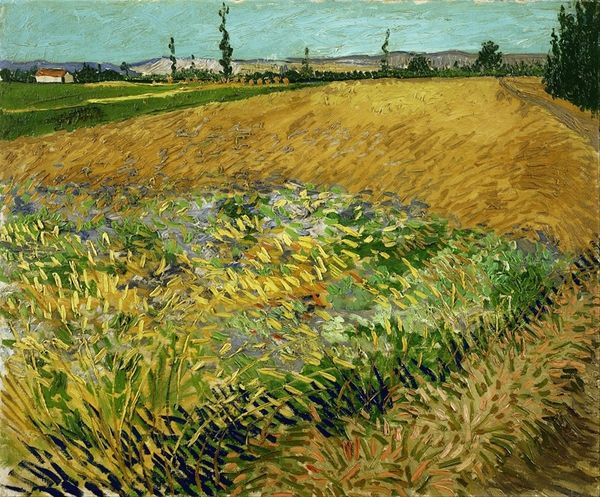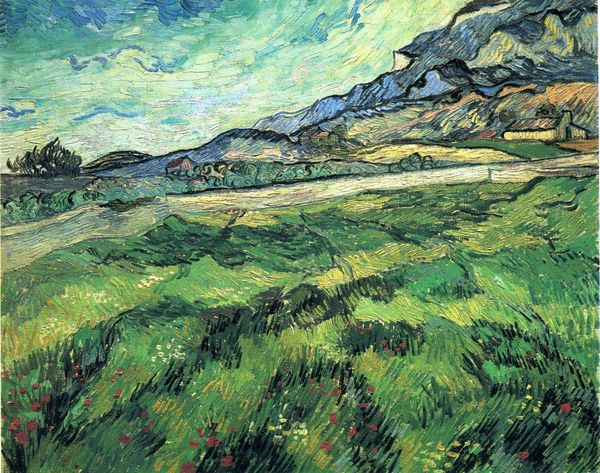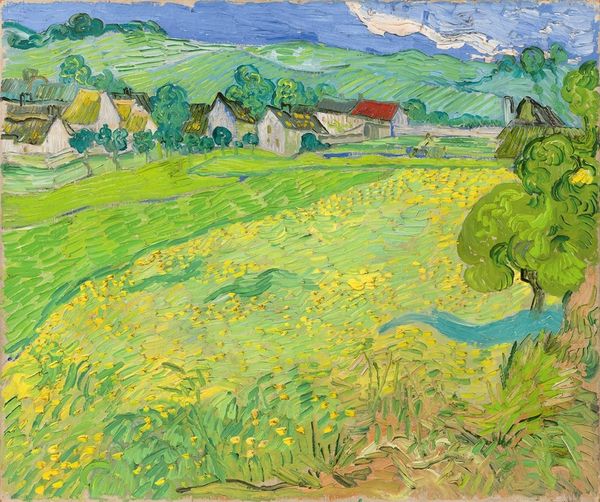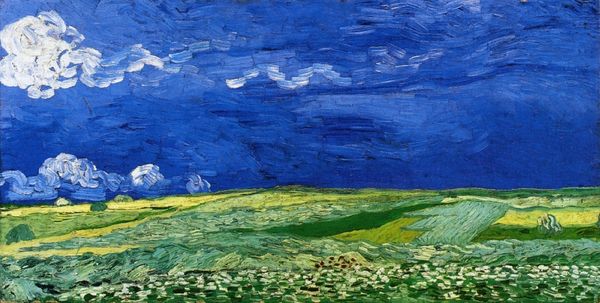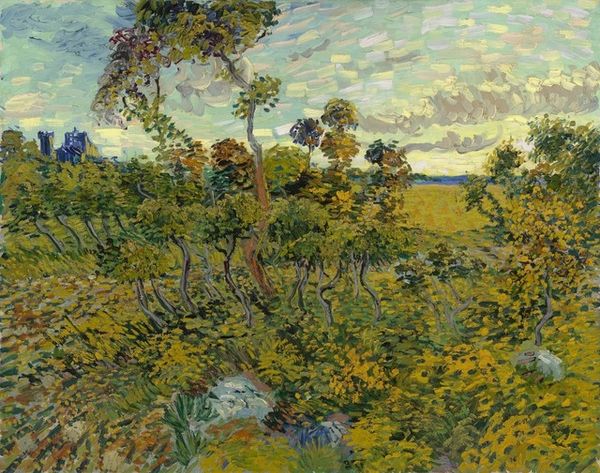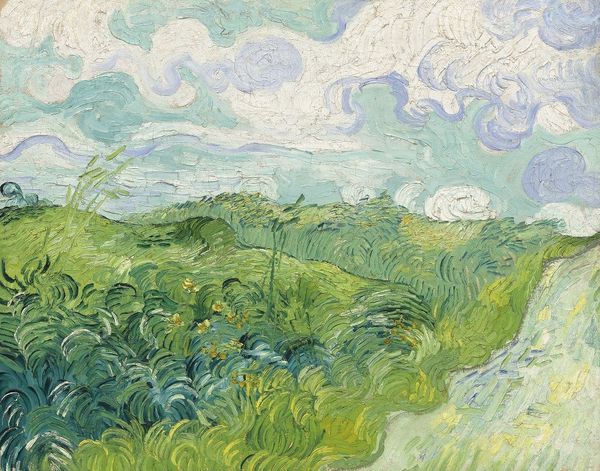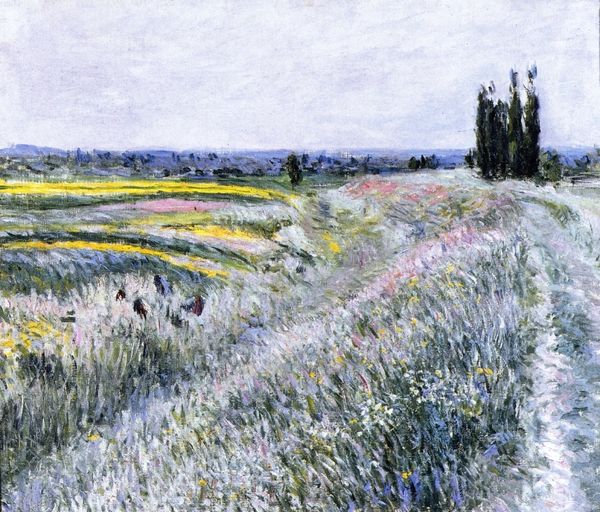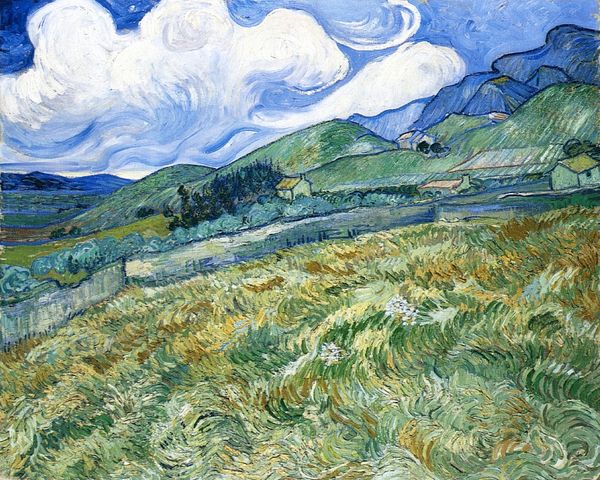
painting, plein-air, oil-paint, impasto
#
painting
#
grass
#
impressionist painting style
#
plein-air
#
oil-paint
#
landscape
#
impressionist landscape
#
impasto
#
expressionism
#
paint stroke
#
post-impressionism
#
expressionist
#
realism
Dimensions: 73.5 x 92 cm
Copyright: Public domain
Editor: Here we have Van Gogh’s “The Plain at Auvers,” created in 1890. It’s an oil painting, a landscape. The overwhelming feeling is one of… agitation. I can feel the wind practically bending the wheat. What do you see in this piece? Curator: The visible labor involved in the production is key. The impasto technique isn't just about capturing light; it's about the artist's physical engagement with the material. Consider the implications of "plein-air" painting for Van Gogh. Editor: It brings the painting outside, right? More immediate. Curator: Exactly. It changes the social context of production. He is face-to-face with the landscape and the working class. He's bringing the means of artistic production into a space dominated by agricultural labor. Notice how the sky is treated with just as much labor as the landscape itself, implying their equal importance. What does that suggest to you about Van Gogh's perspective on the land and the labor related to it? Editor: Perhaps he saw the land itself as something worked, something almost manufactured through farming? He gives importance to nature. Curator: And its raw materiality! It's no longer simply an idyllic scene but rather something actively produced through labor and intervention. That materiality ties into his social observations; think about how landscapes like this were transformed to meet growing consumer needs. Editor: I never thought of landscape painting in terms of production and consumption before! Curator: Considering art through the lens of labor and materials adds a fascinating layer to interpretation. Editor: I will carry that with me for sure. Thank you.
Comments
No comments
Be the first to comment and join the conversation on the ultimate creative platform.
